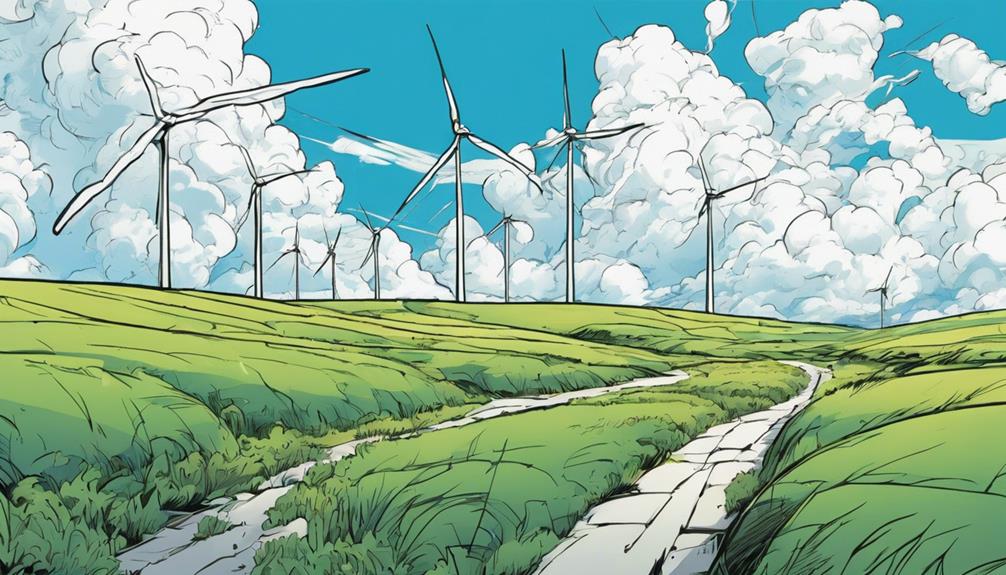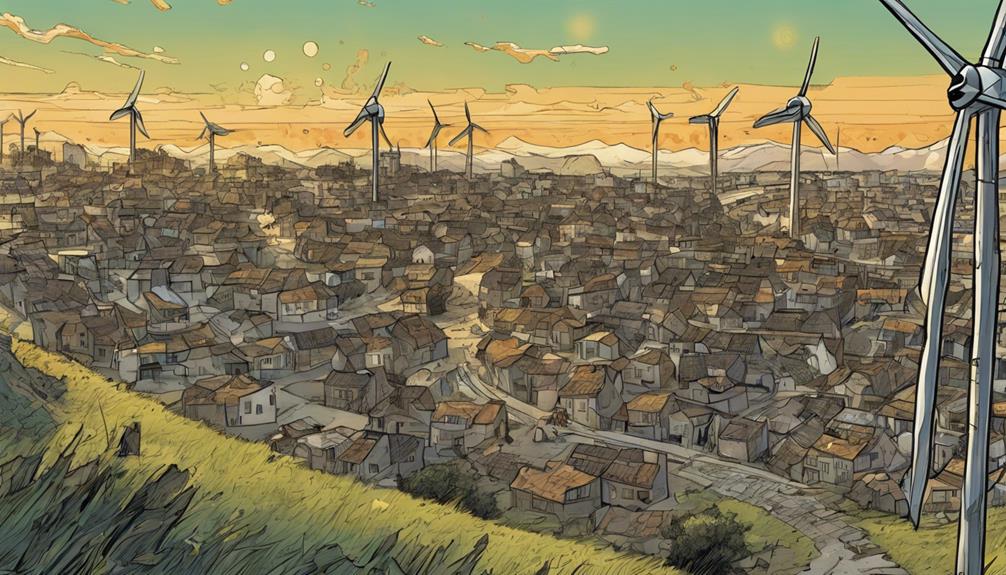Larger wind turbines are transforming the renewable energy landscape by capturing more energy, reducing costs, and minimizing environmental impact. Advancements in technology have enabled taller towers and longer blades, increasing energy production and capacity factors. These larger turbines offer better cost-effectiveness and lower environmental impact per unit of energy produced. With ongoing innovations in design, materials, and monitoring systems, they're set to play a crucial role in a sustainable energy future. As the industry continues to push the boundaries of efficiency and innovation, it's clear that bigger is indeed better – and there's more to come.
Key Takeaways
- Larger wind turbines increase energy capture and reduce costs through economies of scale and higher capacity factors.
- Advanced technologies, such as longer blades and taller towers, enable larger turbines to generate more power efficiently.
- Larger turbines have a lower environmental impact per unit of energy produced, making them crucial for a sustainable energy future.
- Predictive maintenance and advanced monitoring systems minimize downtime and increase energy production in larger turbines.
- Strategic land use and grid-scale battery storage complement larger wind turbines, enabling more efficient and effective renewable energy generation.
Efficiency and Performance Gains
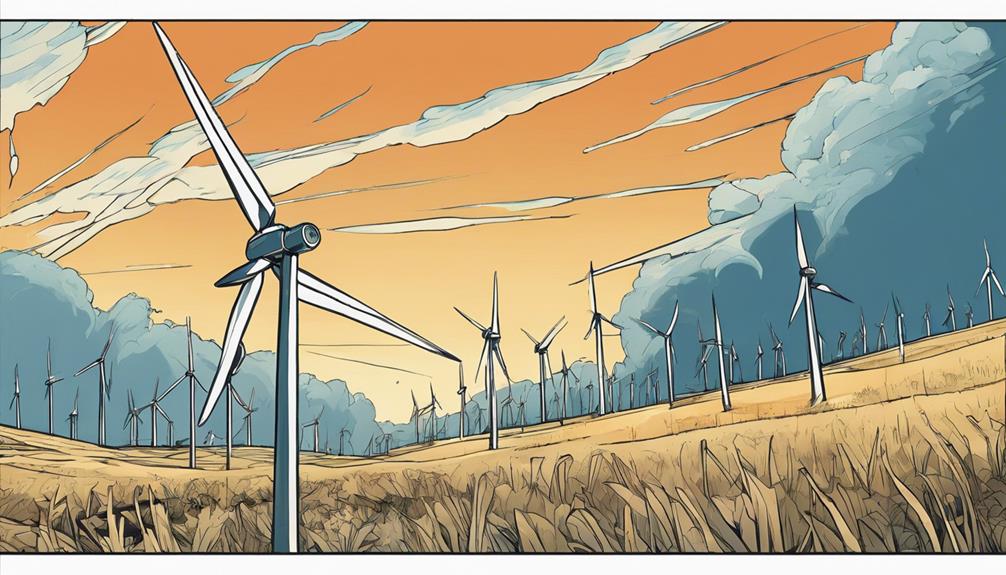
As rotor sizes increase, larger wind turbines capture more energy efficiently, thanks to advancements in technology that enable taller towers and longer blades.
This leads to notable improvements in efficiency, as larger turbines can harness more wind energy and convert it into electricity. The resulting higher capacity factors mean these turbines generate more power over time, making them a vital component in the shift to renewable energy.
Optimizing rotor sizes is key to maximizing energy output and efficiency, and ongoing technological advancements continue to enhance the performance of larger wind turbines.
Cost-Effectiveness and Environmental Benefits
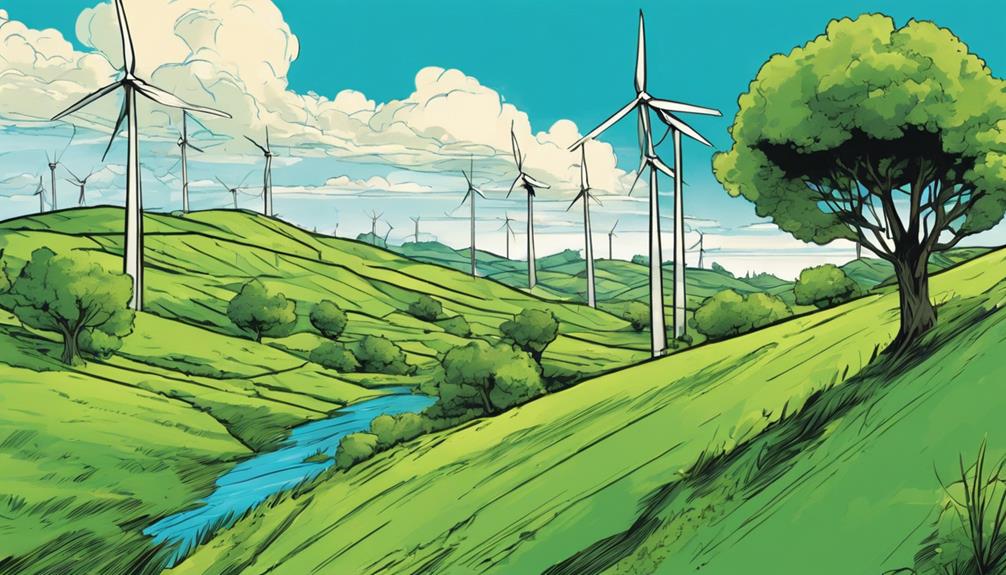
Despite their higher initial expenses, larger wind turbines ultimately offer better cost-effectiveness over their lifespan, thanks to economies of scale in manufacturing and installation that help reduce costs per unit of energy produced.
This is particularly significant, as larger turbines can generate more electricity while minimizing environmental disruptions. In fact, larger turbines have a lower environmental impact per unit of energy produced compared to smaller turbines, making them a more sustainable option.
Proper siting and planning of larger wind turbine installations are essential to minimizing environmental disruptions. By reducing greenhouse gas emissions and combating climate change, larger turbines play a crucial role in the shift to a sustainable energy future.
Maintenance and Grid Integration
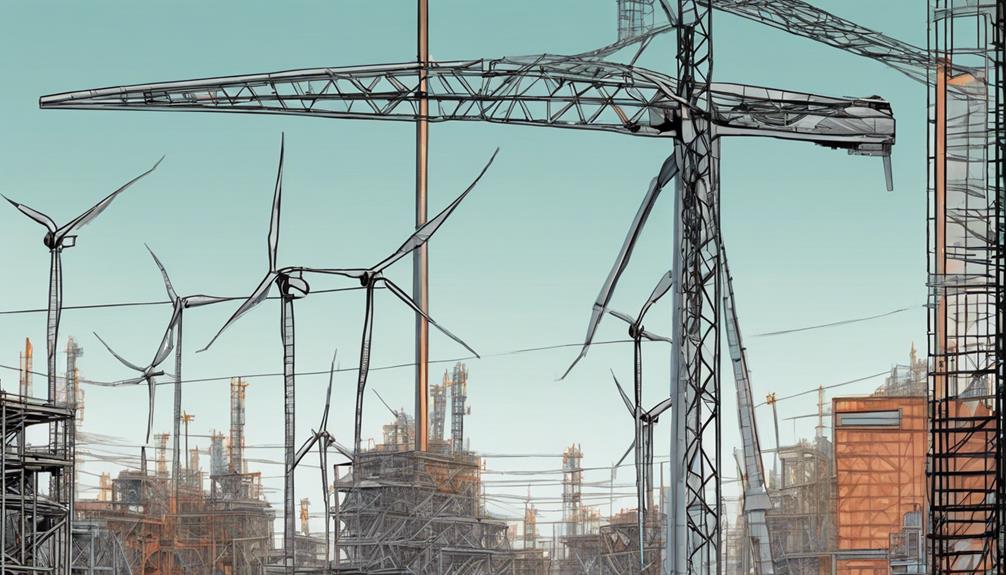
Larger wind turbines benefit from economies of scale in maintenance operations, reducing overall costs and minimizing downtime through advanced monitoring systems that enable predictive maintenance. This proactive approach ensures that potential issues are identified and addressed before they cause significant problems. As a result, bigger turbines experience fewer interruptions, leading to increased energy production and revenue.
Additionally, their improved design and materials increase their reliability and lifespan, further reducing maintenance needs. When it comes to grid integration, larger turbines can be incorporated more efficiently into the power grid due to their higher capacity and predictability. This makes them an attractive option for utilities and grid operators seeking to balance supply and demand effectively.
Technological Advancements and Growth
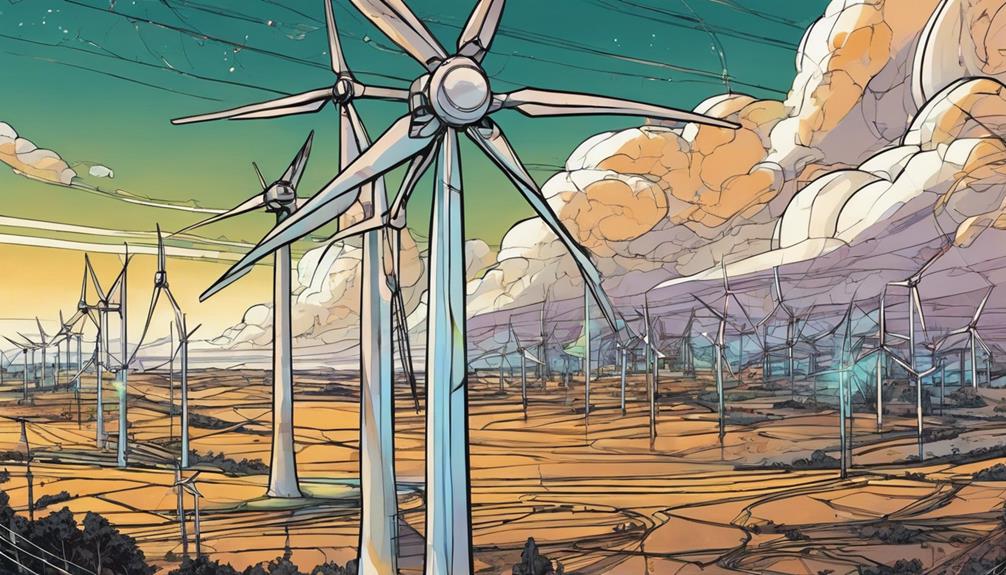
Technological advancements have propelled the efficiency of larger turbines forward, incorporating aerodynamic blade designs and advanced control systems that optimize performance and enhance competitiveness in the renewable energy sector. These developments have driven investment in larger turbines, accelerating the shift to a sustainable energy future.
| Innovation | Impact |
|---|---|
| Advanced blade designs | Increased energy capture |
| Smart control systems | Optimized performance |
| Larger rotors | Higher capacity factors |
| Advanced materials | Improved reliability |
| Digital monitoring | Predictive maintenance |
As the industry grows, larger turbines attract more investment, creating jobs in manufacturing, installation, and maintenance sectors, stimulating local economies. The growth of larger wind turbines is vital for a diverse energy mix, reducing reliance on fossil fuels and combating climate change.
Size, Land Use, and Storage
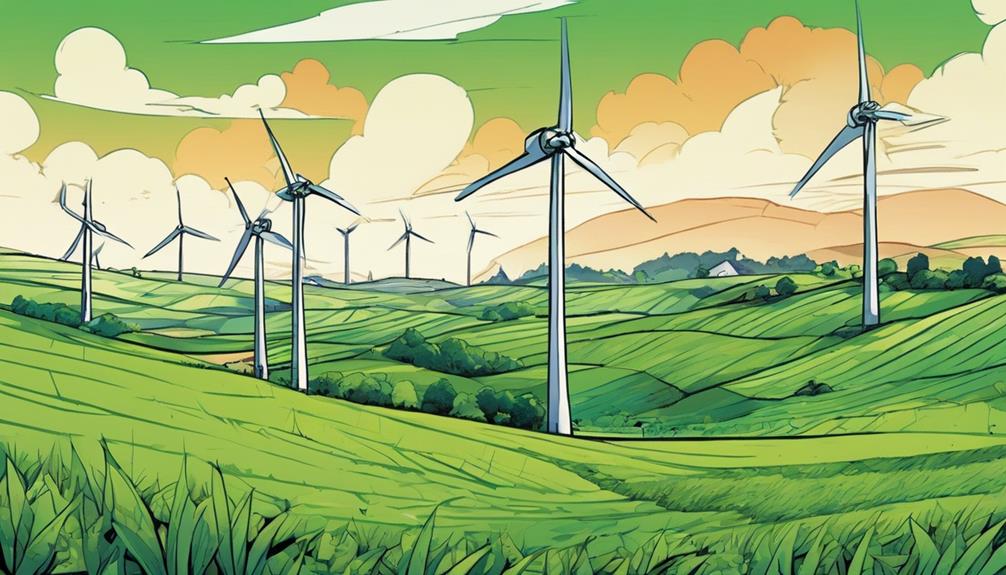
Frequently, the increased efficiency of larger wind turbines allows for a more strategic use of land, enabling wind farms to generate more power while minimizing their environmental footprint.
With larger turbines, fewer units are needed to achieve the same power capacity, resulting in a reduced land footprint. Moreover, the turbines can be spaced further apart, minimizing the overall land disturbance. This optimized land use is particularly important for large-scale wind farms.
In addition, the integration of grid-scale battery storage complements the intermittent nature of wind energy, ensuring a stable and reliable power supply. By leveraging larger wind turbines, the industry can reduce its environmental impact while increasing its energy output.
Optimizing Energy Output and Reliability
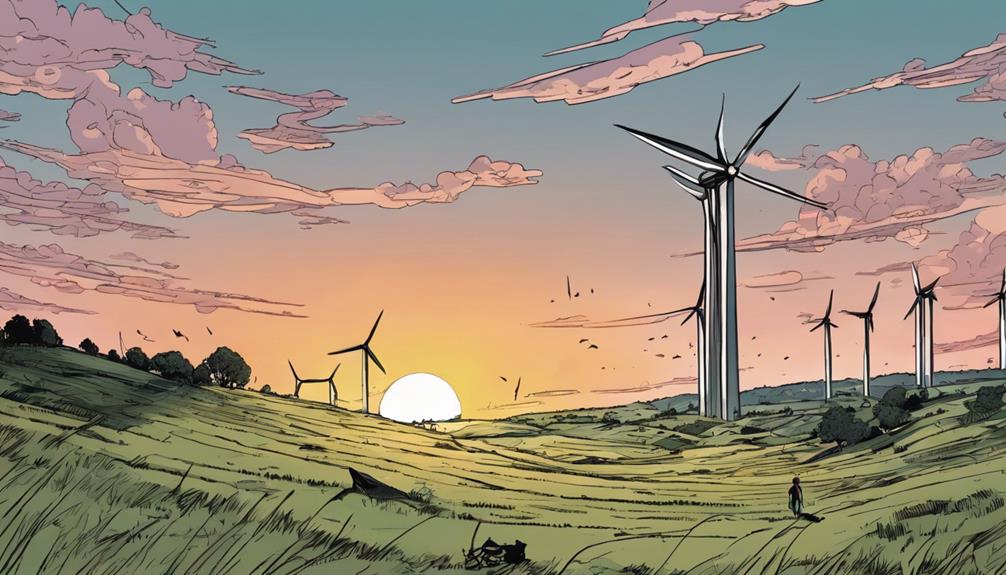
Bigger wind turbines' ideal rotor diameters and advanced control systems enable them to capture more energy efficiently, thereby increasing their capacity factors and overall reliability. This is achieved through technological advancements such as aerodynamic blade designs, which reduce drag and increase lift, allowing turbines to operate at higher efficiencies even in low-wind conditions.
Advanced monitoring systems also play an important role in predictive maintenance, minimizing downtime and ensuring that turbines operate at peak levels. Moreover, improved design and materials increase the lifespan of larger wind turbines, reducing maintenance costs and enhancing their overall reliability.
Industry Trends and Future Outlook
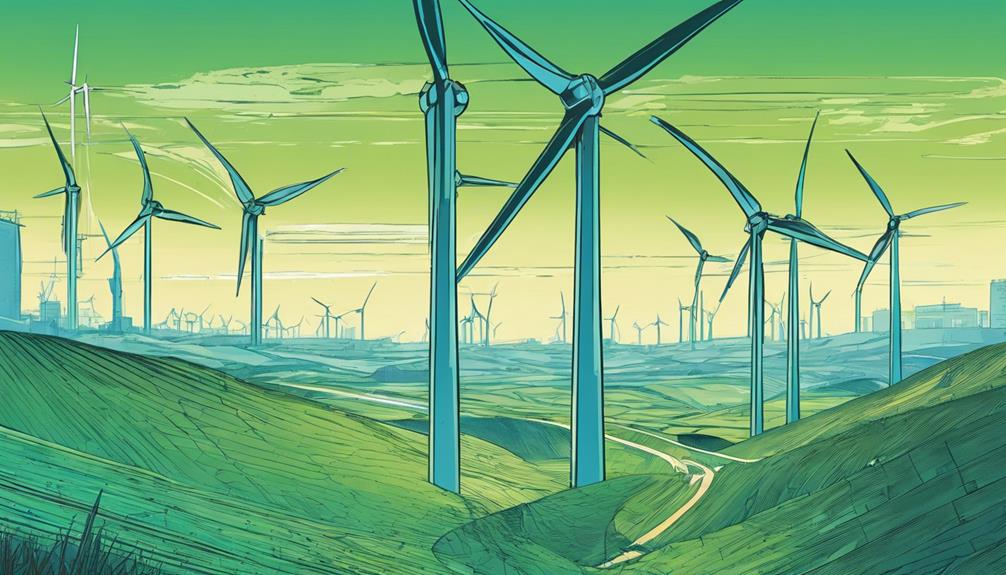
As the demand for renewable energy continues to rise, the wind industry is experiencing a shift towards larger, more efficient turbines, driving innovation and investment in the sector. This trend is expected to continue, with bigger turbines becoming the norm.
Investments in larger turbines are driving technological advancements, improving efficiency, and reducing costs. The industry is also seeing a growth in jobs, particularly in manufacturing, installation, and maintenance.
As the world moves towards a sustainable energy future, bigger wind turbines are playing a pivotal role, contributing to a more diverse energy mix and reducing reliance on fossil fuels.
The future outlook is promising, with bigger turbines set to remain at the forefront of the renewable energy revolution.
Frequently Asked Questions
What Is the Average Lifespan of a Bigger Wind Turbine?
They wonder about the average lifespan of a bigger wind turbine. Improved design and materials increase the reliability and lifespan of larger wind turbines, with an average lifespan of around 25 years.
Can Bigger Wind Turbines Be Used for Residential Power Generation?
With a single bigger turbine capable of powering over 1,400 homes, yes, they can be used for residential power generation, offering a clean and efficient alternative to traditional energy sources.
How Do Bigger Wind Turbines Affect Local Wildlife Populations?
She explains that bigger wind turbines can have both positive and negative impacts on local wildlife populations, depending on the species and habitat, with proper siting and planning minimizing disruptions.
Are Bigger Wind Turbines More Susceptible to Lightning Strikes?
They find that bigger wind turbines are more susceptible to lightning strikes due to their increased height and larger surface area, but advanced lightning protection systems mitigate this risk.
Can Bigger Wind Turbines Be Retrofitted With Newer Technologies?
Technological tweaks transform tired turbines, as bigger wind turbines can indeed be retrofitted with newer technologies, seamlessly integrating innovative features to boost efficiency and performance without replacing the entire structure.
What Innovations in Bigger Wind Turbines Can Maximize Electricity Generation?
Innovations in bigger wind turbines play a crucial role in maximizing wind turbine generation factors. Upgrades in blade design, taller towers, and improved control systems have enhanced the efficiency of wind energy production. These advancements increase energy capture and overall output, making wind power a more viable renewable energy option.
Conclusion
As the wind industry continues to supersize its turbines, it's a breeze to see why – bigger is literally better.
With efficiency and performance gains, cost-effectiveness, and environmental benefits, it's a wonder we didn't think of this sooner.
But let's be real, who needs scenic coastlines or peaceful rural landscapes when we can have towering turbines as far as the eye can see?
The future of sustainable energy has never looked more, well, imposing.
